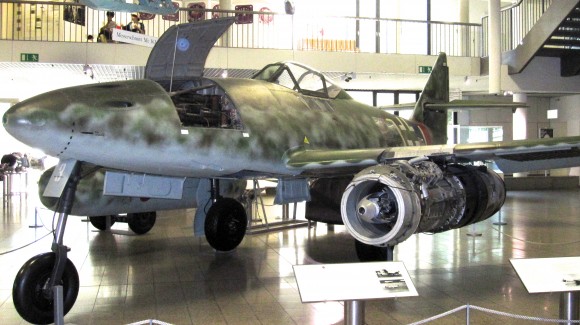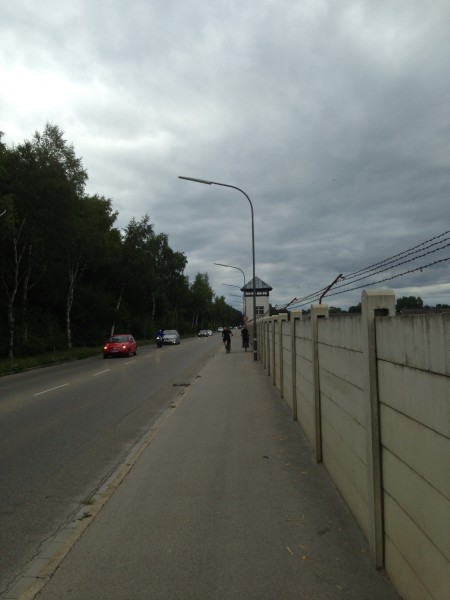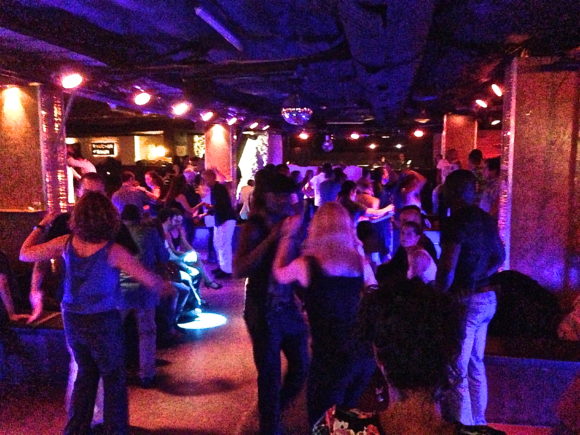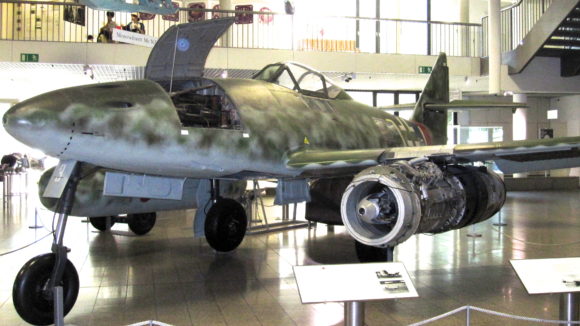
I recently spent two weeks traveling through Germany, visiting various screw machine shops and dealers. Before I began visiting customers, I took the opportunity to spend my first weekend in the country as a tourist in Munich. I chose to start the trip in Munich because the first annual Munich Salsa Congress was taking place. (I try to go salsa dancing in every place I travel for work.) I also had read that the city was beautiful and ranked as one of the best places to live in the world. And I planned to visit Dachau, the concentration camp only a half hour out of town. I had never been to a concentration camp, so as a Jew, I felt going there was the right thing to do.
Before I left, I asked my dad what he knew about Munich, as I regard him as well traveled and generally quite culturally literate. My father’s answer was that Munich made him think of Neville Chamberlain’s appeasement of Hitler, and the dreadfully tragic 1972 Olympics held there, during which Palestinian terrorists murdered nine Israelis. But I went in with an open mind, maybe because those things had happened before I was born. I was excited about the salsa dancing, seeing the famous beer garden in the city’s English Garden, and anticipating the rush I get from traveling internationally. It’s so refreshing to me to walk around in a place where people don’t speak English, don’t use dollars, and think and act differently than Americans.
Despite that I was running on fumes after two hours of sleep over the last 36 hours, I hit Munich’s sights right away. I visited the Deutsches Museum, a museum dedicated to German engineering with a lot of emphasis on aircraft history. I thought it was only fitting that I should go to an engineering museum in Germany, on a trip dedicated to visiting German manufacturers.
One display that caught my eye was an Me 262 jet fighter plane from WWII (the first jet fighter ever used) , which curiously was missing the swastika decal on its tail. People told me prior to the trip, that in Germany–as well as some other European countries–you can be jailed for wearing a swastika. Although that first seemed strange to me, coming from the Land of the Free, I get it. The law may stem from the fear that the icon could somehow fuel a renaissance of Naziism–the government doesn’t want to take any chances, even if it infringes on freedom of expression. Later that day, in a store window, I noticed some old coins from WWII that had little white stickers on them, which I realized were covering small swastikas. Seeing the stickers after just seeing the altered airplane decal was slightly unsettling to me. It made me ponder if the people in Munich were trying to forget their horrific past. But the swastika represents the darkest period of the country, which German people are repeatedly taught to feel ashamed of. Can I blame them for not wanting to look it on a daily basis?

Sunday, my final day in Munich, I visited Dachau. I felt a little strange asking people at the train station how to get there. Were they thinking, “that tourist must be going to the concentration camp”? I learned that Dachau is actually the name of a small village, with its own train stop a half hour from Munich. When I arrived at the stop, I had to walk about 30 minutes to reach the camp. There was a bus from the train station, but I didn’t know when it would come, and I decided it would be more fitting to walk from the station, like the prisoners had to 70 years ago. Before I arrived at the camp, I was taken aback by all the normal homes throughout the town. There were nice modern condos a mere 200 feet from the camp gates. Does it bother people to look at the rusty barbed wire fence outside the camp every day? I’m not sure. Would it bother me to see a plantation in Georgia where Americans were enslaved for centuries? I must admit, I think I might get used to it.
Exploring the camp was moving, as I expected, but I didn’t break down in tears as I walked in the crematorium where the bodies were disposed of, saw the “showers” and the cramped barracks. It was a surreal experience. It was hard to believe I was actually there, standing in the place where all of the horrific atrocities occurred against my ancestors. It made all of the Holocaust stories I had read about and seen in movies more real–that was important. But I must confess, I cried more watching Schindler’s List.
**************
Aside from the hotel desk clerks in Munich, who were somewhat cold and disinterested in my tourist questions, I really liked the people I met throughout Germany. The machine shop owners I visited were generous with their time, took me out to lunch, and gave me a thorough education on how running a business in Germany works. (It’s tough. We forget how good we have it here.) Unfortunately, most of the guys I visited usually don’t buy used machines, but they treated me with respect and maybe they will give me the time of day if I can find them an INDEX MS 32. (There is another blog coming soon specifically about my visits with customers.)
I drove all over the country, traveling around Stuttgart, then up to Cologne. On the way to Cologne, I spent the night in Karlsruhe, a medium-sized university city. The place was dead by the time I sought out food around 10:30 p.m. Every restaurant was closed aside from a little kebab shop, likely owned by Turkish folk. Germany is full of wonderful kebab shops run by its considerable Middle Eastern population.
In the restaurant, I met a German college student named Christoph who helped me order my kebab, because I wanted to tell the guys at the counter not to add yogurt, but they didn’t speak English. For the next half hour we ate our delicious kebabs, talking about German culture and politics. He told me about the Germans’ shame from the Holocaust, saying that until Germany’s 2006 World Cup victory, the people were even bashful about waving German flags. He also talked about the generational differences among Germans, and the country’s complex views of Israel.

One of the highlights of the trip was that I got to go salsa dancing in Munich, Cologne and Berlin. I was quite impressed with the dancers. The women were able to follow my L.A. salsa style, even though they generally only knew the very different Cuban style. I am blatantly stereotyping now, but when I think of German people, I think of people with a high technical aptitude and people who are willing to follow rules. Perhaps those characteristics made the German women such good salsa dancers. In any case, they know what they’re doing. I’ll be happy to go back there soon.
Question: What do you think of when you think of Germany?
Noah Graff is a machine tools dealer at Graff-Pinkert & Co. and an editor at Today’s Machining World.


9 Comments
I also visited Germany, with a non-jewish group, I was the only jew among them. i loved the German people, the culture, the food and Munich. It was a ll beautiful. i did break down in dauchau feeling the cramped quarters and the weight of the burdens that the people there had to endure. It really drove home all the stories and films and history that I had been taught by my jewish relatives and sunday school back in the states. It was a sad and dark time in history but I think the German people have done the best they can with the present and i would go back. Interesting to read your article, thank you. Michele
As a Generation X-er, my personal views of Germany range have dramatically improved over time — obviously with the fall of the Berlin Wall (I was around 15) standing as a huge demarcation point. (This was one year after two German teams competed at the 1988 Olympics, as I recall.)
These days, I think of Oktoberfest. Sausage. Heidi Klum. The Scorpions!
Always cognizant of their years of infamy, of course, but let us not forget that America went through its own terrifying times, as well (just longer ago).
As an American engineer working for an American company with multiple plants in Germany, I get to travel to Germany fairly often, even having the opportunity to live in Heidelberg for a short while in 1999/2000. I have nothing but the most positive comments about Germany and the proud German people. My German colleagues and I have worked together for well over 10 years and I view them as some of my best friends in the world. I think while Germany is now able to move forward from the darker times in the 20th Century, her citizens are aware of the past and are making sure that type of outrage never happens again.
The author was right on with mention of 2 key things: 1) The covering of the swastika in public view, and 2) The re-surgent pride that came in 2006 when Germany hosted the World Cup. Prior to 2006 you would rarely see a German flag flying. 2006 and after you can see German flags flying proudly in the breeze everywhere.
I have done my best to learn to speak some passing German, and the Germans really appreciate when someone really tries to speak their language, even though they all pretty much speak excellent English.
Lastly, there is an excellent technical museum in Sinsheim (~ 70 km’s SE of Heidelberg) which houses a fantastic collection of WW II military vehicles, both German and Allied. It is the only place I am aware of with a German Panther and Stuermtiger (Tiger with special mortar barrel) tanks. I highly recommend this museum to anyone with an interest in engieering or military history.
Noah –
First Having worked with several German machine tool companies , after many trips to Germany, and having relatives in the Rodenbach area if I had to live anyplace other that the USA it would be in Germany – a beautiful country – Mosel valley, wine trail-Deidesheim Berlin, the Christmas markets, , Schwarzwald, Berchtesgarden, etc.
It is always risky to make general statements but I have found the German’s to be more technology and long term oriented whereas in the U.S. most companies are bottom line and short term oriented. In addition the upper management of the German machine tool companies I worked with all had a strong manufacturing background with advance technical degrees, where as in America we emphasise the MBA degree with no hands-on manufacturing background.
There is also more loyalty on the part of manufacturing engineers to look first at German machine tools and equipment, whereas in the U.S. there is a general aceptance of imports no matter where they come from.
Last Germany has become more expensive to visit, 260euros/night ($345.00) at the Sheraton at the Franfurt airport.
We were in Germany the end of July – missed the EMO show this year — beautiful fair ground (Messe) – always a great exposition.
Regards
Albert B. Albrecht
Though it might be just as appropriate, I don’t think we will be covering up the “Stars and Bars” anytime soon, here. Now, if we can just get it off the flags! (running for cover). I enjoyed driving the Autobahn in the 70s, that is the 1970s. I was actually driving in the hundreds! I will remember Michael’s note about the Museum in Sinsheim, in case I ever get back.
There are still a lot of stretches on the Autobahn that do not have a speed limit. 120 -140 mph is not unusual (and a lot of fun!). I can definitely see the difference in the road surfaces when there is a limit and no speed limit and that has made me much more aware of the deplorable condition the US roads are in.
I think about the buggers that shelled me granny’s fish n chip shop!
Hello Noah,
Thank you for the nice article about Germany (Deutschland). I really liked it.
Michael Maier
Maier Werkzeugmaschinen
Wehingen Germany
Noah:
Thank you for a very stirring story. I’ve been to Germany several times for EMO. Two years ago a friend from Utilis invited me to tour Berlin. We visited the Brandenburg Gate, Victory Angle Tower and the Holocaust Memorial. Here in the heart of a bustling Berlin, only a few blocks from Check Point Charlie, I gazed upon a place of somber reverence. As we made our way through this field of megalithic monuments, I couldn’t help but notice there was not even a single name marked on any stone. Truly this is a monument to those who died but also a message to the living so they died not in vain.
Jim Gosselin
Genevieve Swiss